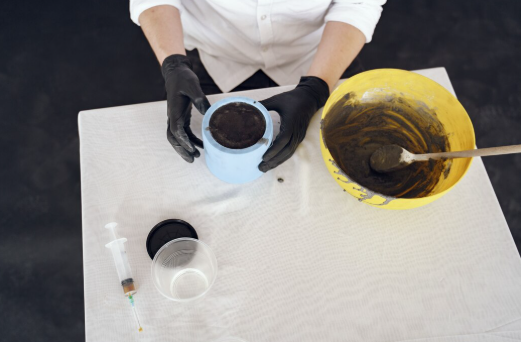When we look at a finished product, we often admire its color, texture, and durability without considering the science behind its surface. In many cases, these qualities are not inherent to the base material but are the result of a carefully applied coating. Material coatings are thin layers applied to the surface of an object, or substrate, to provide a host of benefits that enhance both its appearance and its performance.
This technology is a cornerstone of modern manufacturing, transforming ordinary materials into extraordinary products. From protecting a smartphone screen to making an airplane more fuel-efficient, coatings play a vital role. Let’s explore how these specialized layers improve both the form (aesthetics) and function (performance) of materials across various industries.
Elevating Aesthetics: The “Form”
The most immediate impact of a coating is often visual. It can completely change how a product looks and feels, making it more appealing to consumers and allowing for endless customization.
Adding Color and Texture
Coatings are the primary way to impart color to a vast range of products. Whether it is the vibrant finish on a car or the sleek black on a laptop, paint and powder coatings provide consistent and durable color. Beyond just color, coatings can introduce unique textures. They can create surfaces that are glossy, matte, soft-touch, or even textured to mimic other materials like wood or stone. This versatility allows designers to achieve specific looks that would be impossible with the substrate alone.
Creating Unique Visual Effects
Advanced coatings can produce dynamic visual effects that capture attention. Pearlescent coatings, for instance, create a shimmering, multi-toned appearance that changes with the viewing angle. Metallic flakes can be added to create a sparkling finish, while other coatings can produce an iridescent or color-shifting effect. These sophisticated finishes add a layer of luxury and distinction to products, from consumer electronics to high-end packaging.
Improving Performance: The “Function”
While aesthetics are important, the functional benefits of coatings are what make them indispensable in so many applications. These layers act as a shield, an enhancer, and a problem-solver, dramatically extending the life and utility of the underlying material.
Protection and Durability
One of the most critical functions of a coating is protection. Materials are often exposed to harsh environmental conditions that can cause degradation. Coatings provide a barrier against moisture, UV radiation, chemicals, and physical abrasion. For example, a marine coating protects a ship’s hull from the corrosive effects of saltwater, while a hard coat on eyeglasses makes them resistant to scratches. This protective layer significantly extends the lifespan of a product, saving on replacement costs and reducing waste.
Enhancing Surface Properties
Coatings can modify the surface of a material to give it new, valuable properties. Hydrophobic coatings, for instance, repel water, making surfaces self-cleaning or preventing ice buildup. In the world of graphics and signage, a specialized coating can make a material receptive to ink, such as with pressure sensitive vinyl used for decals and wraps. Anti-reflective coatings are applied to lenses and screens to reduce glare and improve clarity. These functional enhancements open up new possibilities for how materials can be used.
Specialized Industrial Applications
In industrial settings, coatings are engineered to solve specific challenges. Thermal barrier coatings are used in jet engines to protect metal components from extreme heat, allowing the engines to run hotter and more efficiently. Intumescent coatings, used for fire protection, swell up when exposed to heat, forming an insulating char layer that protects structural steel. In medical applications, antimicrobial coatings are applied to devices to prevent the growth of harmful bacteria.
By bridging the gap between aesthetics and performance, material coatings are a powerful tool for innovation. They allow manufacturers to use cost-effective base materials and enhance them to meet demanding specifications for both appearance and function. The next time you appreciate a product’s beautiful finish or remarkable durability, you will know that its surface holds the secret to its success.


